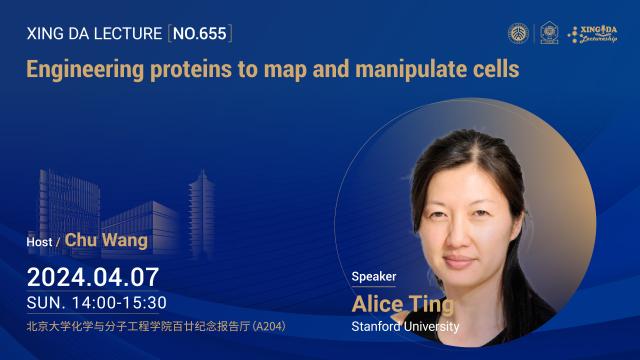
Abstract
Biological function is orchestrated through the collective action of molecules and cells. Our laboratory develops technologies to study molecular and cellular assemblies at high spatial and temporal resolution in living cultures and organisms. I will describe recent technologies from our laboratory including TransitID for unbiased mapping of proteome trafficking within cells and between cells, light-regulated proximity labeling, and new enzymes for proximity labeling created through machine learning. I will also describe new technologies for manipulating cellular behavior in response to specific external cues, through the use of engineered synthetic receptors.
Introduction
Alice Ting is a Professor of Genetics, Biology, and by courtesy, Chemistry at Stanford University. Before joining Stanford in 2016, Alice was a Professor of Chemistry at MIT. Alice received her training at Harvard University (working with EJ Corey), UC Berkeley (PhD with Peter Schultz) and USCD (postdoctoral training with Roger Tsien). Alice’s work lies at the interface of chemistry and biology and the molecular technologies she has developed, including enzyme-catalyzed proximity labeling, have been widely adopted in cell biology and neuroscience to probe organelle proteomes and protein interaction networks. She has received the NIH Pioneer Award, the Arthur Cope Scholar Award, and the McKnight Technological Innovations in Neuroscience Award among other prizes. Alice has been a Chan Zuckerberg Biohub investigator since 2017 and was elected to National Academy of Sciences in 2023. Prof. Ting’s laboratory focused on inventing and disseminating transformative technologies for probing molecules and functional networks at both the sub-cellular and multi-cellular level, leveraging her laboratory’s unique strengths in chemical synthesis, protein engineering, directed evolution, proteomics, and microscopy. The research program of her laboratory includes three areas:
(1) molecular recorders for scalable, single-cell recording of past cellular events;
(2) molecular editors for the precise manipulation of cellular biomolecules, pathways, and organelles;
(3) proximity labeling for unbiased discovery of functional molecules.